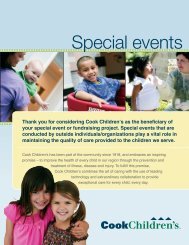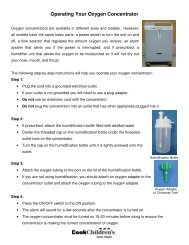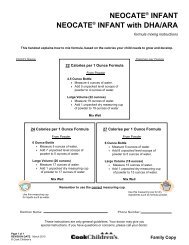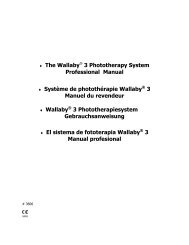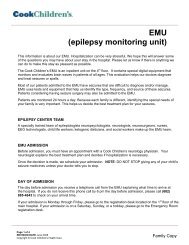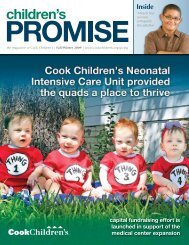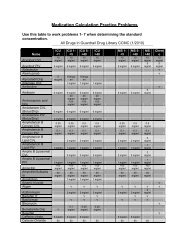inside this issue: Deep Brain Stimulation life after ... - Cook Children's
inside this issue: Deep Brain Stimulation life after ... - Cook Children's
inside this issue: Deep Brain Stimulation life after ... - Cook Children's
You also want an ePaper? Increase the reach of your titles
YUMPU automatically turns print PDFs into web optimized ePapers that Google loves.
The medication Sam took left him sleepy andnauseous, and effected changes in his mood.He was prescribed physical therapy inhopes of forcing his leg back to its properposition, causing excruciating pain for Sambecause the dystonia prevented his leg frommoving. This occurred for six weeks, leavingthe Gladen family in more pain – bothphysically and mentally.“It was extremely frustrating,” Sam said.“I knew it was happening. I had no clue howto explain it. I was tired of being told that all Ineeded was a good dose of counseling and Iwould be OK. This will sound weird, but I reallywas relieved when they found something on theMRI because at that point I was starting tobelieve it was all in my head.”With tears welling up in her eyes, Debbieagrees with her son. “What upset us was thatsomeone could make us doubt our child,”she said.Dystonia is a syndrome of disorderedmuscle contractions, causing painful abnormalpatterns of movement, poorly controlledpurposeful movements or abnormal postureswhich may occur in virtually any part of thebody. Essentially, <strong>this</strong> causes muscles to beactivated in an abnormal sequence, makingpurposeful movements difficult.Test results showed Sam had a geneticform of dystonia. Dystonia may result fromother causes, such as trauma, medications orother medical conditions. It is believed thatfamily members from both Sam’s father andmother dealt with some form of dystonia,including Sam’s grandmother, but it hadnever been diagnosed.Dystonia causes varying degrees of disabilityand pain, from mild to severe. To date, there isno cure, but DBS surgery can slow down or insome cases stop the dystonia from spreading.The fear was that Sam’s disease would continueto spread throughout his body.Now the Gladens knew what they weredealing with, but still struggled to find help.They were referred to a Houston hospital, butcould not get their questions answered.After an Internet search looking for anotherhospital close to home that treated dystonia,they then called a hospital in Oklahoma Citywhere a nurse told them <strong>Cook</strong> Children’s wastreating the disease. As it turned out, that wasquite the understatement.Physician network pediatric neurologistsFernando Acosta, M.D., and Warren Marks,M.D., along with pediatric neurosurgeon JohnHoneycutt, M.D., collaborated to establish<strong>Cook</strong> Children’s as one of the elite pediatric<strong>Deep</strong> <strong>Brain</strong> <strong>Stimulation</strong> programs in the nation.The first implant at <strong>Cook</strong> Children’s wasperformed in September 2007.<strong>Cook</strong> Children’s is the first independentpediatric hospital in the United States, and theonly children’s hospital in Texas, to offer acomprehensive pediatric movement disorderprogram that includes <strong>Deep</strong> <strong>Brain</strong> <strong>Stimulation</strong>surgery, which is used to restore normalmovements in patients with dystonia.The DBS operation is a surgical procedureinvolving the placement of electrodes into thebrain that are connected to an implanted4 cook children’s promise – the magazine of <strong>Cook</strong> Children’sWinter 2008 5



